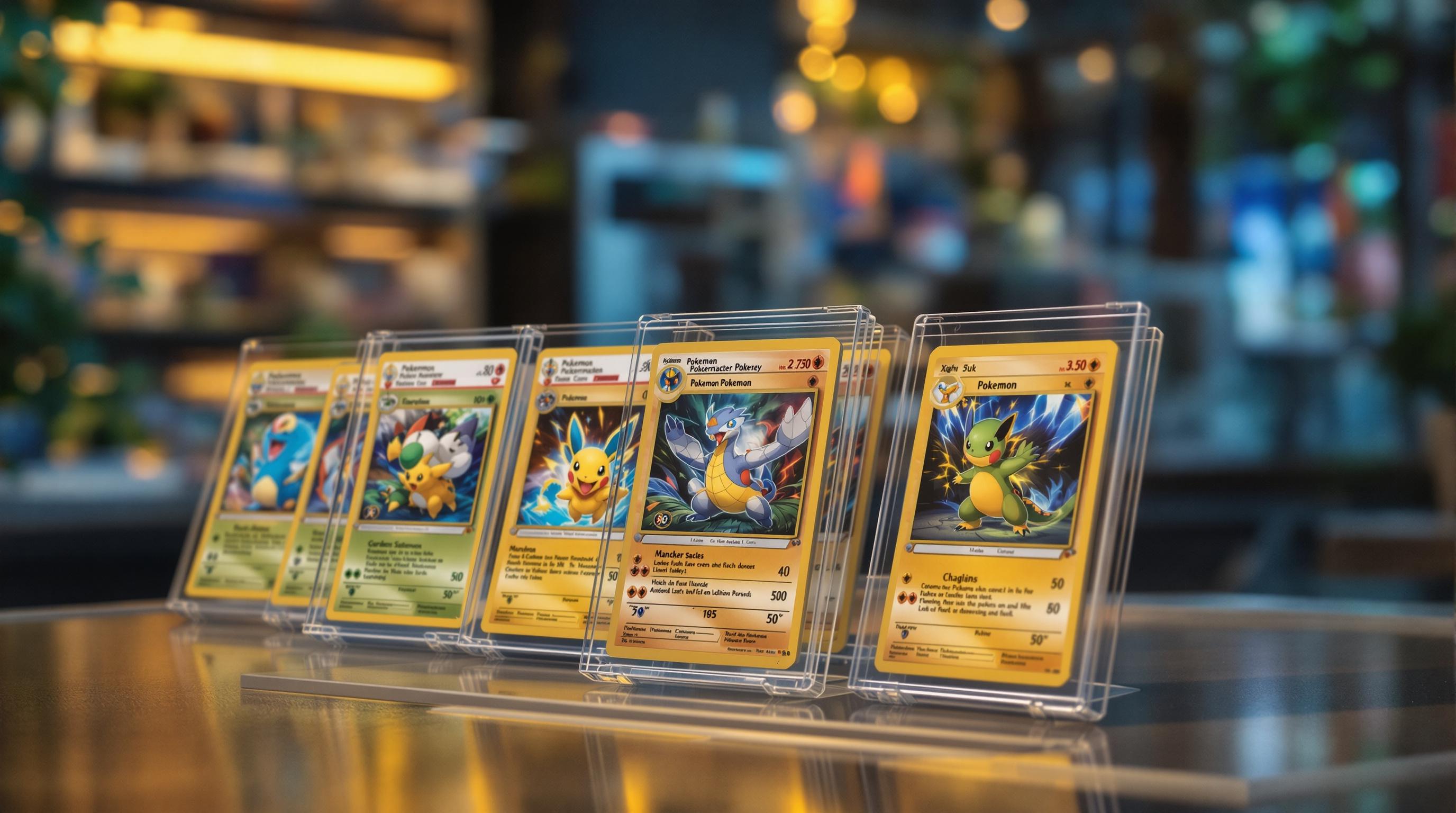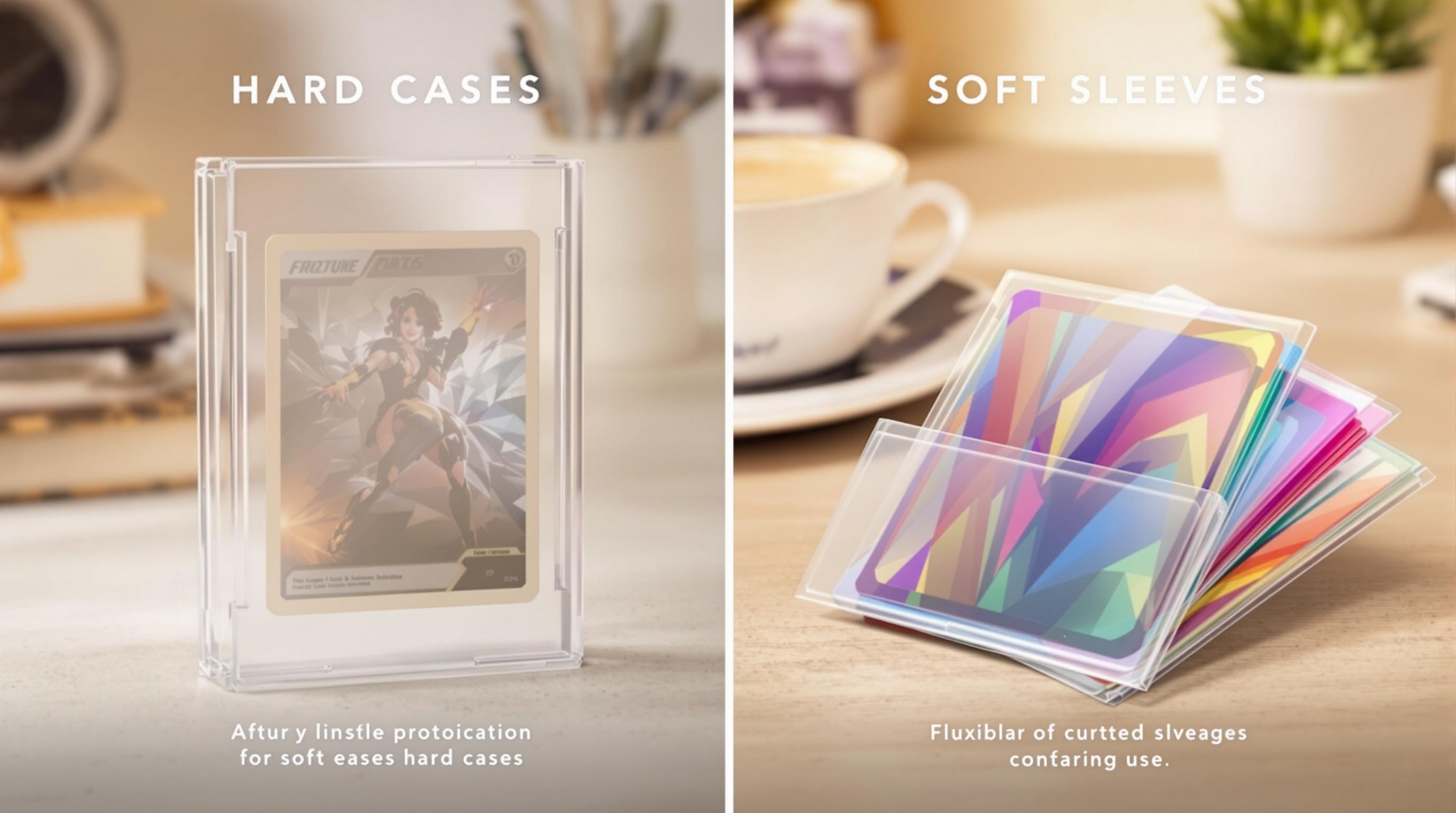Cross-brand collaborations bring together two or more brands to create unique products or experiences. These partnerships help businesses reach new audiences, boost their image, and offer consumers exclusive, limited-edition items. Some standout examples include Louis Vuitton x Supreme, which merged luxury and streetwear, and LEGO x Star Wars, blending creativity with fandom.
Why They Work:
- For Businesses: Shared costs, expanded reach, and increased visibility.
- For Consumers: Access to unique, high-quality, and often collectible items.
Key Success Factors:
- Shared values between brands.
- Clear goals and audience alignment.
- High-quality products and perfect timing.
Collaborations also thrive in industries like fashion, trading cards, and even digital collectibles (e.g., Adidas x Bored Ape Yacht Club NFTs). For collectors, directories like Card Shops List help find authentic, limited-edition items. These partnerships aren’t just marketing stunts - they reshape industries while offering one-of-a-kind opportunities for consumers and collectors alike.
Basics of Cross-Brand Collaborations
What Are Cross-Brand Collaborations?
Cross-brand collaborations happen when two or more brands from different industries join forces to create something new. These partnerships often result in products or services that combine the strengths of both brands, appealing to their shared and unique audiences. A great example? Brands from completely different sectors teaming up to create products that blend their distinct qualities.
Why They Work for Companies and Consumers
These collaborations bring benefits to both businesses and their customers. Here's how:
| Benefit | For Businesses | For Consumers |
|---|---|---|
| Shared Resources and Markets | Split costs, expanded distribution, and access to new audiences | Wider variety of products, often easier to find |
| Boosted Brand Image | Greater visibility and credibility | Access to exclusive, premium offerings |
| Fresh Ideas | Combined expertise to create new products | Unique, high-quality items born from collaboration |
Take the Coca-Cola x Stranger Things partnership as an example. It provided fans with exclusive collectibles while giving both brands a chance to expand their reach and connect with new audiences.
What Makes a Collaboration Successful?
The H&M x Karl Lagerfeld partnership is a great case study. It brought together luxury fashion and affordability, setting a high standard for how collaborations can work. To replicate this kind of success, brands should focus on:
- Shared Values: Both brands need to align in their core values while still offering something distinct.
- Clear Goals: Both partners should agree on what they want to achieve.
- Audience Appeal: The product or service must resonate with the customer bases of both brands.
- High Standards: Quality should never take a backseat.
- Perfect Timing: Launching at the right moment can make or break the impact.
This is especially true in niches like collectibles, where limited-edition items thrive when they cater to fans of both brands. For example, the Ganni x New Balance collaboration at Copenhagen Fashion Week showed how smart timing and a strong partnership can grab attention and create buzz.
Current Trends in Cross-Brand Collaborations
Partnerships Across Different Industries
Collaborations between brands from completely different industries are becoming more common, resulting in products that grab attention and spark curiosity. Take the LEGO x Adidas partnership, for example - it blends the fun of LEGO with the style of athletic footwear. Another standout is the E.L.F x Liquid Death collaboration, which shook up the beauty world by pairing makeup with canned water. These unexpected pairings show how brands can surprise and engage consumers by thinking outside the box.
These partnerships often result in products that wouldn’t have existed otherwise, offering something fresh to consumers while reaching new audiences.
Exclusive and Limited-Run Products
Limited-edition releases have become a go-to strategy for cross-brand collaborations, creating buzz and driving demand. Some recent examples highlight just how effective this approach can be:
| Collaboration | Outcome |
|---|---|
| Louis Vuitton x Supreme | Sold out instantly, with resale prices doubling within 24 hours |
| New Balance x Aimé Leon Dore | Over 70,000 people queued online for a chance to buy |
| Ganni x New Balance | Generated $2.1 million in media impact globally |
This strategy is especially powerful in the collectibles market, where exclusivity and scarcity are key to driving value.
Collaborations in Collectibles
The collectibles market has fully embraced cross-brand collaborations, producing unique items that collectors can’t resist. Trading card companies and sports memorabilia brands are teaming up to create products that stand out while ensuring authenticity through careful verification processes and limited distribution channels.
As brands move into digital spaces, partnerships are also expanding into NFTs, offering collectors new opportunities while maintaining the appeal of rarity. The Adidas x Bored Ape Yacht Club collaboration is a prime example, generating $24 million and blending physical and digital collectibles seamlessly.
Collectors now rely more on verified retailers and directories to ensure authenticity, creating a more structured and trustworthy ecosystem where the origins and legitimacy of items are critical.
Examples of Successful Cross-Brand Collaborations
LEGO and Star Wars Partnership

The collaboration between LEGO and Star Wars stands out as one of the most impactful in retail history. Since it began, this partnership has combined LEGO's building expertise with the beloved Star Wars universe. With more than 800 different sets - from small character models to intricate collector pieces like the Ultimate Millennium Falcon - it has appealed to both adult collectors and Star Wars enthusiasts, offering fresh ways to connect with the franchise.
This partnership demonstrates how two brands can join forces to expand their audiences and reshape their markets.
Nike and Jordan Collaboration
The Nike and Jordan partnership changed the game for both sneakers and sports marketing. Starting in 1984 with a $2.5 million deal for rookie Michael Jordan, it has since grown into a global powerhouse. Beyond creating a new category of athletic shoes, this collaboration redefined how brands work with athletes.
Some highlights of this partnership include:
| Metric | Achievement |
|---|---|
| Annual Revenue (2023) | $5.1 billion |
| Market Share | 77% dominance with a 54% average resale premium |
| Cultural Recognition | Displayed in major museums like MoMA |
While these examples reshaped their industries, the trading card world has also embraced collaborations to capture the attention of collectors.
Collaborations in Card Collecting
The trading card industry, like fashion and toys, has tapped into partnerships to create standout products. A great example is the collaboration between Upper Deck and Marvel Comics, which brought superhero-themed artwork to trading cards. These types of partnerships add a fresh layer of appeal to collectibles.
For collectors hunting for these unique releases, platforms like Card Shops List (https://cardshopslist.com) are invaluable. They help enthusiasts find stores that stock collaborative cards, whether they're sports crossovers or entertainment franchise tie-ins.
Co-branded card releases have allowed traditional card companies to explore new markets while staying true to their core audience. These collaborations often include special designs or exclusive features that make them highly sought after in the collectibles world.
sbb-itb-0db97a5
Tips for Collectors Interested in Cross-Brand Collaborations
How to Spot Collectible Collaborations
The most sought-after collaborations blend strong brand loyalty with limited availability. Look for partnerships between well-known brands that have dedicated fan bases.
Here are some key indicators to evaluate:
| Indicator | Example |
|---|---|
| Limited Production Run | Louis Vuitton x Supreme (23% profit increase) |
| Distribution Channel | Exclusives sold through authorized retailers |
| Historical Performance | Success rates of previous collaborations |
Checking Licensing and Authenticity
To ensure you're buying legitimate items, follow these steps:
- Cross-check serial numbers with official databases.
- Inspect packaging for holographic seals or other security features.
- Purchase only from authorized sellers to minimize the risk of counterfeits.
Finding Shops Through Directories
Tracking down trustworthy sellers for cross-brand collaborations can be challenging. As these partnerships become more popular, directories are an essential tool for collectors to locate and verify authentic items. A great example is Card Shops List (https://cardshopslist.com), which offers services like authentication, trading, grading, and access to exclusive releases.
When using directories, focus on shops with solid reputations and guarantees for authentic products. Many specialized stores work directly with manufacturers, giving them early access to collaborative releases.
For trading card collaborations, seek out shops involved in official release programs or those with direct ties to major manufacturers. These shops often receive priority allocations for limited-edition items, boosting your chances of securing authentic pieces at retail prices.
The Entire Brand Collaboration Process From Beginning To End
Why Cross-Brand Collaborations Matter
Cross-brand collaborations have shifted from being mere marketing experiments to becoming a core part of how businesses operate and connect with audiences today. These partnerships go beyond short-term buzz, offering long-term benefits for brands and collectors alike.
They serve a variety of purposes, including:
| Purpose | Example |
|---|---|
| Reaching New Markets | H&M x Karl Lagerfeld |
| Sparking Creativity | LEGO x Star Wars |
| Boosting Revenue | Louis Vuitton x Supreme (21% revenue growth) |
Industry leader Claudine Harris, CEO of Miai, highlights their broader importance:
"Collaborations aren't just about sales boosts. They're about aligning with relevant audiences and building credibility through association."
For collectors, these partnerships present exciting opportunities to own exclusive, one-of-a-kind items that reflect the heritage and quality of trusted brands. High-low collaborations - where luxury meets accessible brands - have made collecting more approachable without losing the sense of exclusivity.
To stay ahead in this space, collectors should focus on using trusted directories and building relationships with official retailers to ensure they access authentic releases. These partnerships continue to shape the collecting world by blending creativity, exclusivity, and value, offering items that resonate both now and in the future.
FAQs
What trading card brands are worth the most?
If you're diving into trading card collecting, knowing which brands carry the highest value is essential.
Here are some of the top brands dominating the market:
| Brand | Known For |
|---|---|
| Panini | Modern sports cards, exclusive NBA license |
| Topps | Baseball cards, rich history |
| Upper Deck | High-end quality, authentication features |
| Bowman | Rookie and prospect cards |
| Fleer | Iconic basketball and baseball cards |
These brands stand out not just for their history but also for their strategic partnerships. For example, Panini’s exclusive NBA licensing has made their cards highly desirable, while Upper Deck’s Marvel-themed releases have become collector favorites.
When considering trading card investments, pay attention to factors like:
- Licensing agreements
- Production volume
- Authentication methods
- Distribution networks
To find reputable dealers for these cards, resources like Card Shops List can be incredibly helpful. Combining strong brand recognition with smart collaborations has made these cards a must-have for serious collectors.


